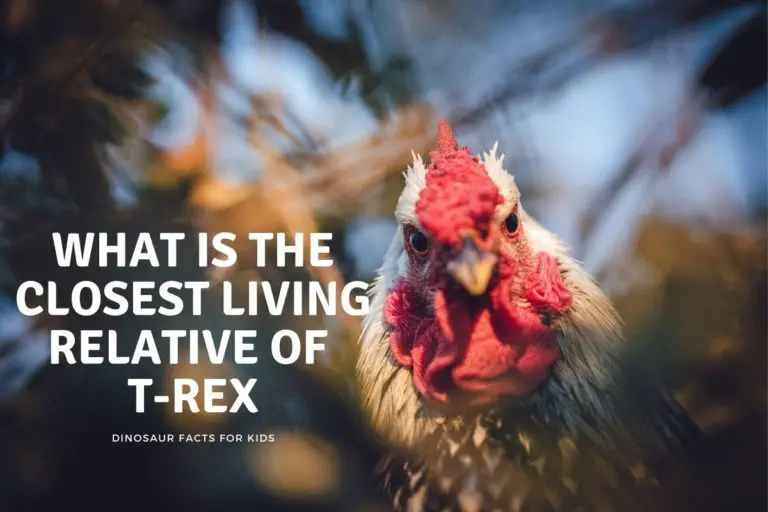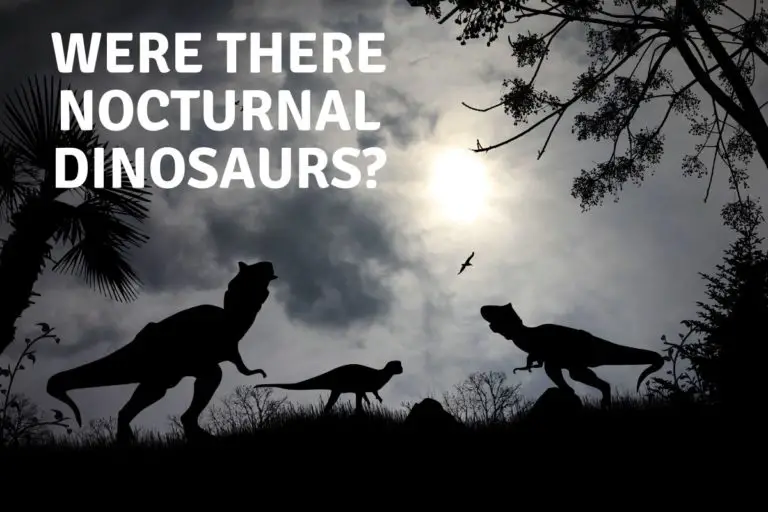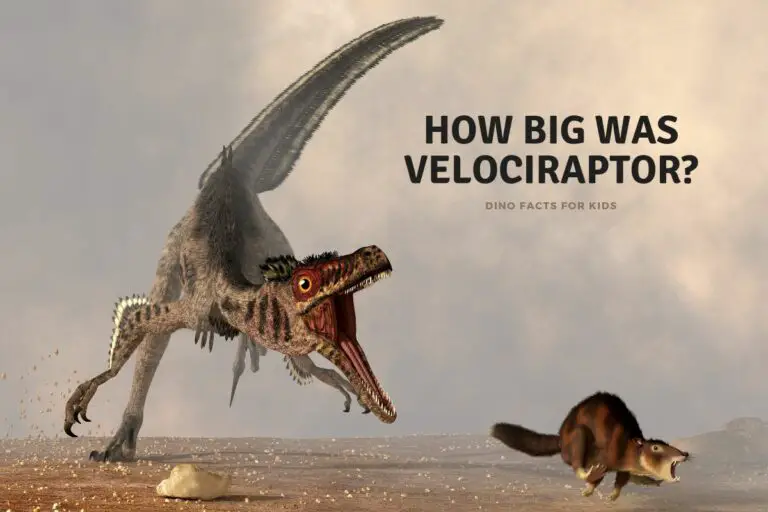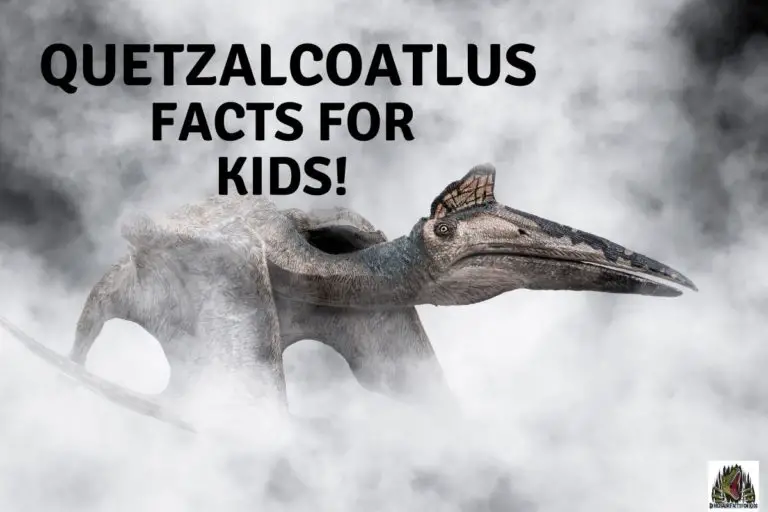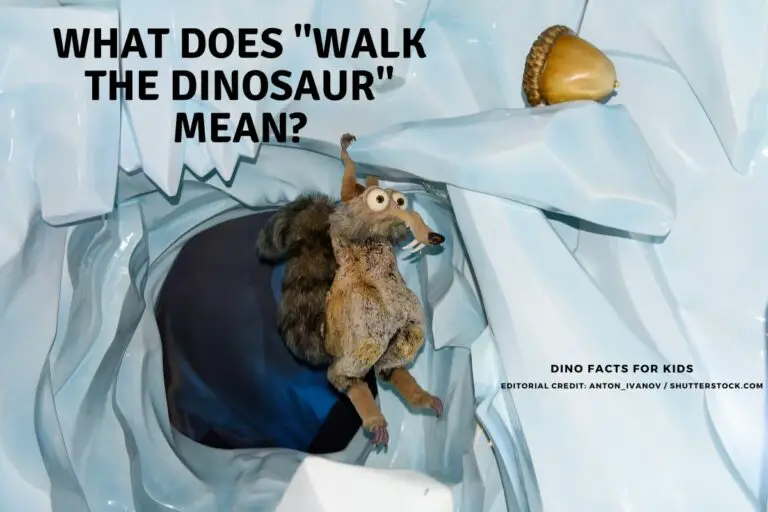Differences Between Jurassic Park Dinosaurs and Real Ones.
The “Jurassic Park” and “Jurassic World” series, while being box office sensations, have always walked a fine line between cinematic fantasy and paleontological reality.
While the movies ignited a resurgence of interest in dinosaurs and paleontology, they also took artistic liberties with many of their prehistoric stars.
From dramatically upsized predators to venom-spitting surprises, the dinosaurs of Steven Spielberg’s and Colin Trevorrow’s worlds often differ from their real-life counterparts sometimes quite dramatically.
This isn’t necessarily a criticism; these choices were often made to heighten the drama, suspense, and visuals of the films. But it still raises the question: How do the silver screen dinosaurs compare to the ones unearthed by fossil records?
In this article, we’ll dive look at the most important dinosaurs in the Jurassic Park and World movies but for an in-depth article that looks at the Velociraptor’s differences you can check out the link
The Differences Between Jurassic Park Dinosaurs and Real Dinosaurs.
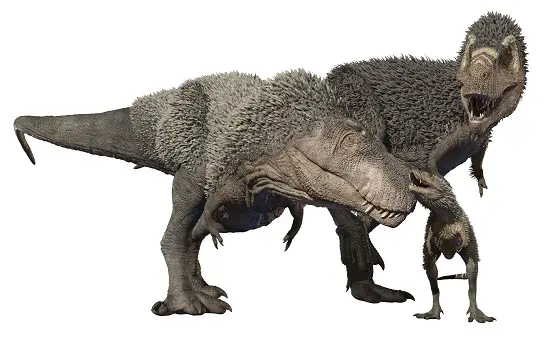
Tyrannosaurus rex
Cinematic T. rex: In the “Jurassic” universe, the Tyrannosaurus rex is arguably the most famous, roaring its way into our collective memories. The movies depict it with a vision based on movement, suggesting it can’t see prey that remains still.
Reality Check: In truth, the T. rex likely had excellent vision, with forward-facing eyes giving it binocular vision—useful for judging distances while hunting. This king of the dinosaurs would have spotted stationary prey with ease. Also it T-Rex was not likely to roar, but chipping may have not been quite as scary!
Why the Difference?: The “can’t see you if you don’t move” trope added a unique suspense element, especially in scenes where humans were desperately trying to avoid detection. It became one of the memorable “rules” of the series, even if scientifically disputed.
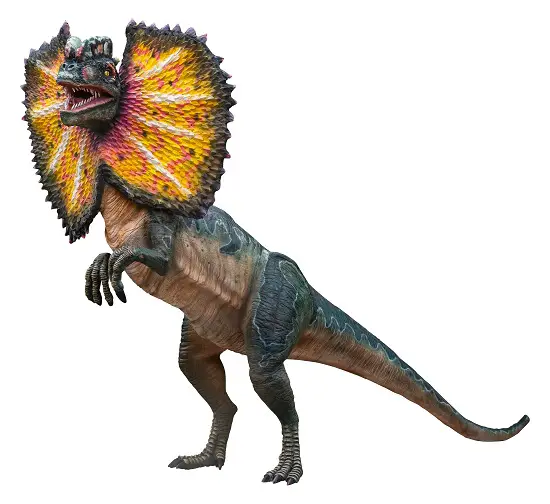
Dilophosaurus
Cinematic Dilophosaurus: In the original “Jurassic Park,” a smaller, frilled-neck dinosaur surprises Dennis Nedry by spitting venom in his face, blinding and subsequently preying on him. This creature was the Dilophosaurus. The same version of the Dilophosaurus also puts an end to Lewis Dodgson in the final Jurassic World Dominion movie.
Reality Check: The actual Dilophosaurus was larger than portrayed and lacked the dramatic neck frill and venom-spitting capability. In fact current paleontological evidence doesn’t suggest any dinosaur with venomous spitting abilities.
Why the Difference?: The inclusion of the venom-spitting trait made for a thrilling and unexpected twist, making the Dilophosaurus a surprise antagonist rather than just another large predator. The frill added an exotic, alien feel to the creature.
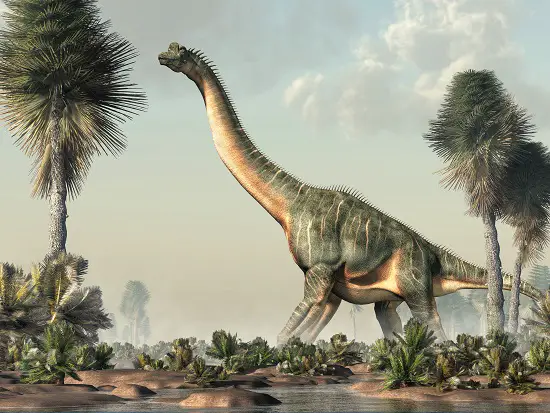
Brachiosaurus
Cinematic Brachiosaurus: These long-necked giants were the first dinosaurs Dr. Grant and his team witnessed in “Jurassic Park,” memorably rearing up on their hind legs to munch on treetop leaves.
Reality Check: While Brachiosaurus were indeed massive and primarily herbivorous, it’s debatable if they could or would rear up like that. Doing so would require immense strength and could pose a risk of injury.
Why the Difference?: The rearing scene was a cinematic choice to showcase the sheer scale and majesty of these creatures. For many viewers, myself included, it was a breathtaking introduction to the “living” dinosaurs of the park.
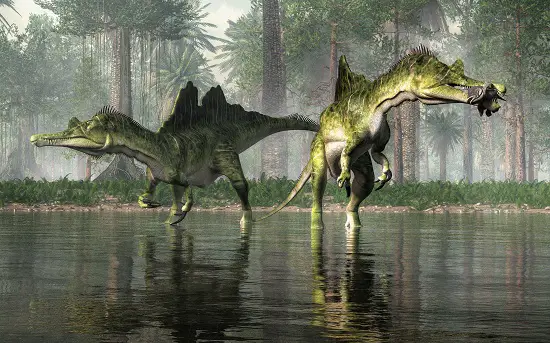
Spinosaurus
Cinematic Spinosaurus: “Jurassic Park III” presented the Spinosaurus as an aggressive mega-predator, even overpowering the T. rex in a battle. Its menacing appearance and behavior made it the primary antagonist.
Reality Check: While Spinosaurus was indeed large, its behavior, dietary habits, and preference for habitats remain topics of discussion among paleontologists. The depiction of it easily defeating a T. rex was a significant departure from current understanding.
Why the Difference?: By introducing a dinosaur that could challenge and defeat the established T. rex, filmmakers provided a fresh, unexpected threat, amplifying suspense and stakes for the film’s protagonists.
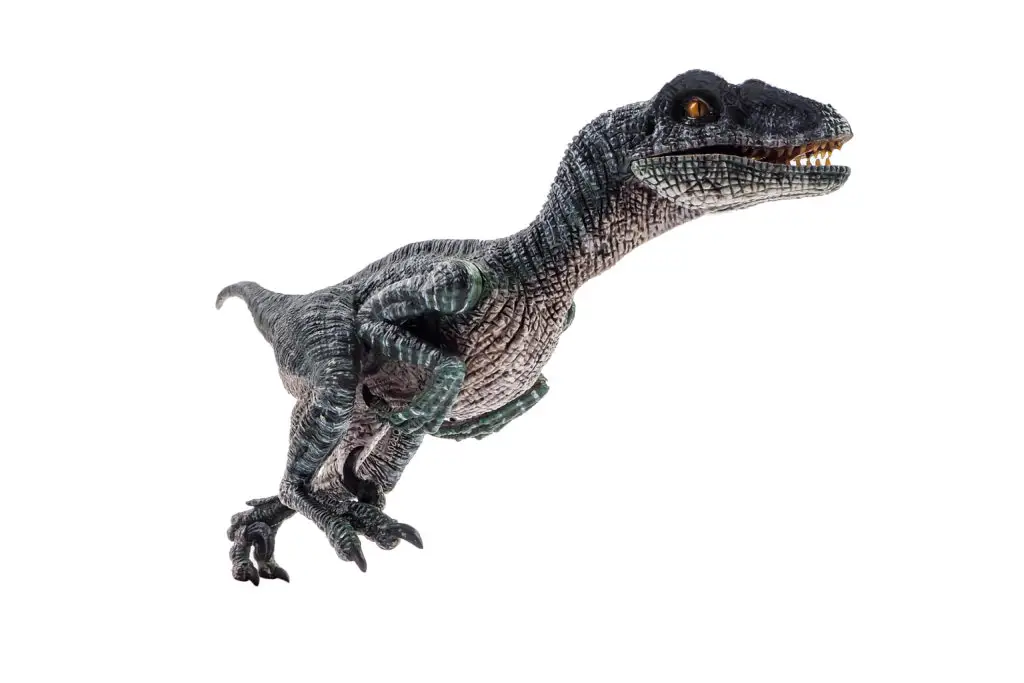
Velociraptor
Cinematic Velociraptor: These cunning pack hunters became central figures across the “Jurassic” series. For a deep dive into their portrayal and evolution in the films, refer to Differences between Jurassic Park Velociraptors and Real ones.
Reality Check: Contrary to their movie size, real Velociraptors were about the size of a turkey and likely had feathers. Their intelligence, while notable, may have been exaggerated in the films.
Why the Difference?: Oversizing and enhancing the intelligence of the Velociraptors made them formidable adversaries for humans. Their role as both antagonists and, later, complex beings added depth to the series. A pack of chicken sized dinsoaurs following our group would have been much less scary!
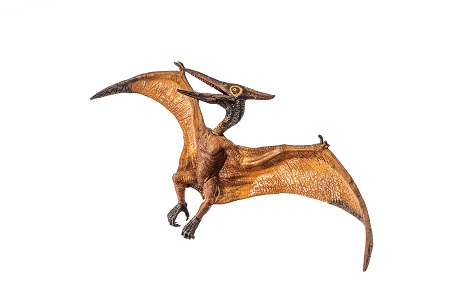
Pteranodon
Cinematic Pteranodon: In both Jurassic Park 3 and Jurassic World, these winged reptiles caused chaos, swooping down and grabbing park-goers after being released from their aviary.
Reality Check: Pteranodons were large, but grabbing and lifting humans would be improbable given their weight and build. Also, they weren’t technically dinosaurs but flying reptiles.
Why the Difference?: A flying threat added a new dimension of danger in the series. Their freedom symbolized the uncontrollable nature of the park’s creatures and the consequences of human interference.

Triceratops
Cinematic Triceratops: One of the heartfelt moments in the original “Jurassic Park” is the discovery of a sick Triceratops, leading to a discussion about its health and diet.
Reality Check: While Triceratops was herbivorous and could have ingested certain toxic plants, the exact ailment and its portrayal in the film were mostly fictional.
Why the Difference?: The sick Triceratops scene served to humanize the dinosaurs, making them more than just attractions or threats. It also provided a moment of wonder for the characters (and audience) as they physically interacted with the creature.
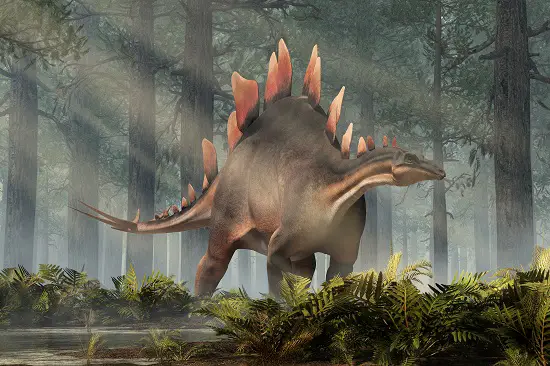
Stegosaurus
Cinematic Stegosaurus: In “The Lost World: Jurassic Park,” a family of Stegosaurus is encountered, and they become aggressive when humans approach their young.
Reality Check: While many animals are protective of their offspring, the exact behavior of Stegosaurus remains speculative. The aggressive scene in the film is based more on narrative needs than definitive scientific evidence.
Why the Difference?: The scene highlighted the unpredictability of wild animals and reiterated the film’s theme that the dinosaurs, despite being cloned and studied, were still wild creatures with instincts and behaviors that couldn’t be fully anticipated.
Differences Between Jurassic World Dinosaurs and Real Dinosaurs.
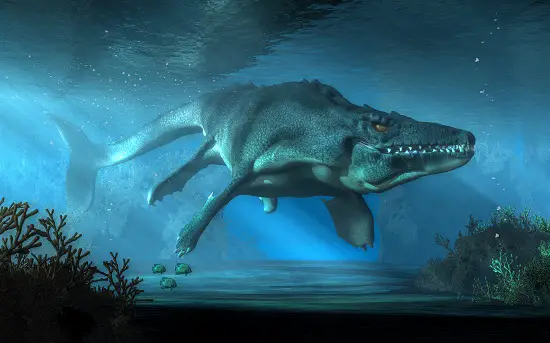
Mosasaurus
Cinematic Mosasaurus: This massive marine reptile made a dramatic entrance in “Jurassic World” by jumping out of its aquatic enclosure to snack on a great white shark. Later, it played a pivotal role in the film’s climactic battle.
Reality Check: Firstly, the Mosasaurus wasn’t a dinosaur but a marine reptile. Its actual size, while still impressive, was smaller than the colossal creature depicted in the films. While they were apex predators of their time, there’s no evidence they hunted contemporary sharks like the great white.
Why the Difference?: The exaggerated size and dramatic feeding scenes were designed to showcase the park’s grandeur and the unparalleled scale of its attractions. Plus, the Mosasaurus served as an unexpected wildcard in the film’s climax.
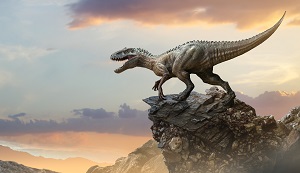
Indominus rex & Indoraptor
Cinematic Creations: These terrifying beasts from the “Jurassic World” films were genetic mixtures, designed to be the park’s premier attractions. Their unique abilities and aggressive nature made them the primary antagonists.
Reality Check: Both the Indominus rex and Indoraptor are purely fictional, born from the idea of genetic engineering and corporate greed. They possess traits from various real-world creatures, but their existence is purely cinematic.
Why the Difference?: As the series progressed, it aimed to critique humanity’s hubris and the dangers of unchecked genetic experimentation which carried on into the Final movie Jurassic World Dominion. These hybrid dinosaurs embodied that theme, representing the unforeseen consequences of playing god.
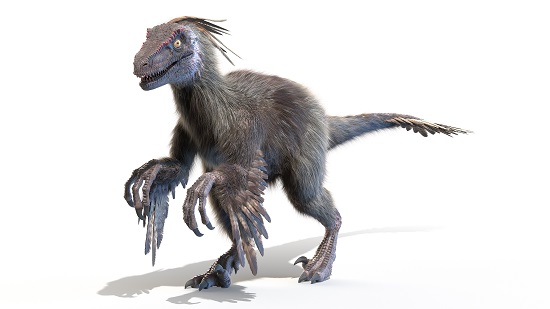
Pyroraptor
Cinematic Pyroraptor: The “Jurassic World Dominion” introduced the Pyroraptor, a brightly colored creature with a knack for swimming in frigid waters. This dinosaur’s size was exaggerated to align with the size of the film series’ velociraptors.
Reality Check: The actual Pyroraptor was considerably smaller, more akin to the size of a large bird. As for its cold-water swimming abilities, current paleontological evidence doesn’t suggest such specialization.
Why the Difference?: Scaling up the Pyroraptor and adding unique abilities made it a fresh and intriguing addition, diversifying the on-screen dino roster while fitting the franchise’s pattern of enhancing dinosaur capabilities for cinematic intrigue.
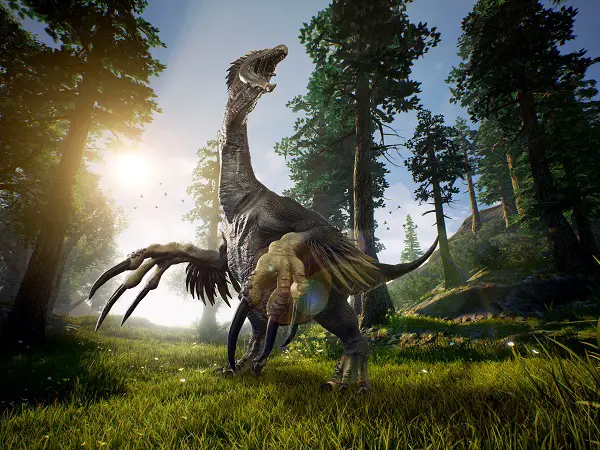
Therizinosaurus
Cinematic Therizinosaurus: In the film, this dinosaur stood out with its aggressive nature, managing to kill a Giganotosaurus, although with considerable help from the T-Rex, despite its blindness.
Reality Check: The Therizinosaurus was known for its long claws and herbivorous diet. Its temperament and behaviors, especially aggressive tendencies, remain speculative. The idea of it being blind is pure fiction, and its combat capabilities, especially against a predator like Giganotosaurus, are debatable. Which we do indeed debate here.
Why the Difference?: Using the Therizinosaurus as an unexpected threat added an element of surprise. Its unique appearance, combined with the added trait of blindness, painted a picture of a creature that’s both vulnerable and dangerous.
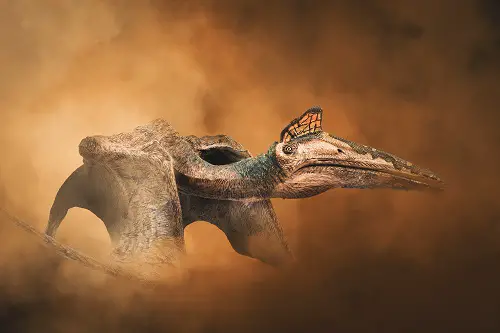
Quetzalcoatlus
Cinematic Quetzalcoatlus: This massive flying reptile wreaks havoc by attacking and destroying a cargo plane, possibly due to territorial behavior.
Reality Check: Quetzalcoatlus was one of the largest known flying animals, but its interactions with human-made structures like planes are, of course, speculative. It primarily fed on fish and small terrestrial vertebrates.
Why the Difference?: The dramatic attack sequence offers viewers a different kind of aerial threat, distinct from the Pteranodons of earlier films. Its inclusion heightens the tension and emphasizes the global scale of the dinosaur resurgence.
T. rex vs. Giganotosaurus Scene
Cinematic Showdown: The film’s prologue sets a dramatic tone with a T. rex being taken down by a Giganotosaurus as Iguanodon watches on.
Reality Check: The Giganotosaurus and T. rex lived millions of years apart and on different continents, making such an encounter impossible. The Iguanodon also lived during a different period, further emphasizing the mismatch.
Why the Difference?: Pitting two of the most formidable predators against each other, even from different eras, is a visual spectacle and narrative gold. Such scenes draw viewers in with their “what if” scenarios, even if they break the rules of paleontological accuracy.
Why are Movie Dinosaurs Different from Real Ones?
Cinema is about storytelling, spectacle, and often, pushing the boundaries of what’s possible. The “Jurassic Park and World” series and its successors are proof positive of this.
Filmmakers often prioritize drama, suspense, and wonder over strict scientific accuracy. Dinosaurs, with a lot of educated guesswork being used to describe their behavior and appearance, become easier to enhance or change for a movie.
While Jurassic park certainly did this almost every movie or creature feature has also exaggerated or changed its prehistoric monsters to suit the story. You can check out both the movie 65 and the Meg movies for more examples of this.
As science progresses, our understanding of these ancient animals develops, but the cinematic versions often remain the same for continuities’ sake.
Conclusion
While dinosaur movies and creature features might not always be 100% ( or much MUCH less) accurate or compare with our current knowledge of dinosaurs, they play an important role in keeping interest levels high in all things prehistoric.
The balance between cinematic spectacle and scientific accuracy is a delicate one, but one thing remains certain: these movies continue to to keep dinosaurs and our prehistoric past in the public eye.
References
- https://en.wikipedia.org/wiki/Dinosaurs_in_Jurassic_Park#
- https://screenrant.com/jurassic-park-dinosaurs-real-fiction-franchise-every/
- https://www.businessinsider.com/jurassic-park-movies-dinosaur-accuracy-2019-11
- https://www.tellitanimated.com/blog/jurassic-park-movie-dinosaurs-compared-to-real-life-animation
- https://medium.com/prehistoric-tales/top-things-jurassic-park-got-wrong-about-dinosaurs-96fe5c1bdd95
Hi, I am Roy Ford a General Studies and English Teacher who has taught all over the world. What started as a fossil collection became a great way to teach, motivate and inspire students of all ages and all over the world about dinosaurs and from that and children’s love of dinosaurs came the site dinosaur facts for kids, a resource for all ages.

